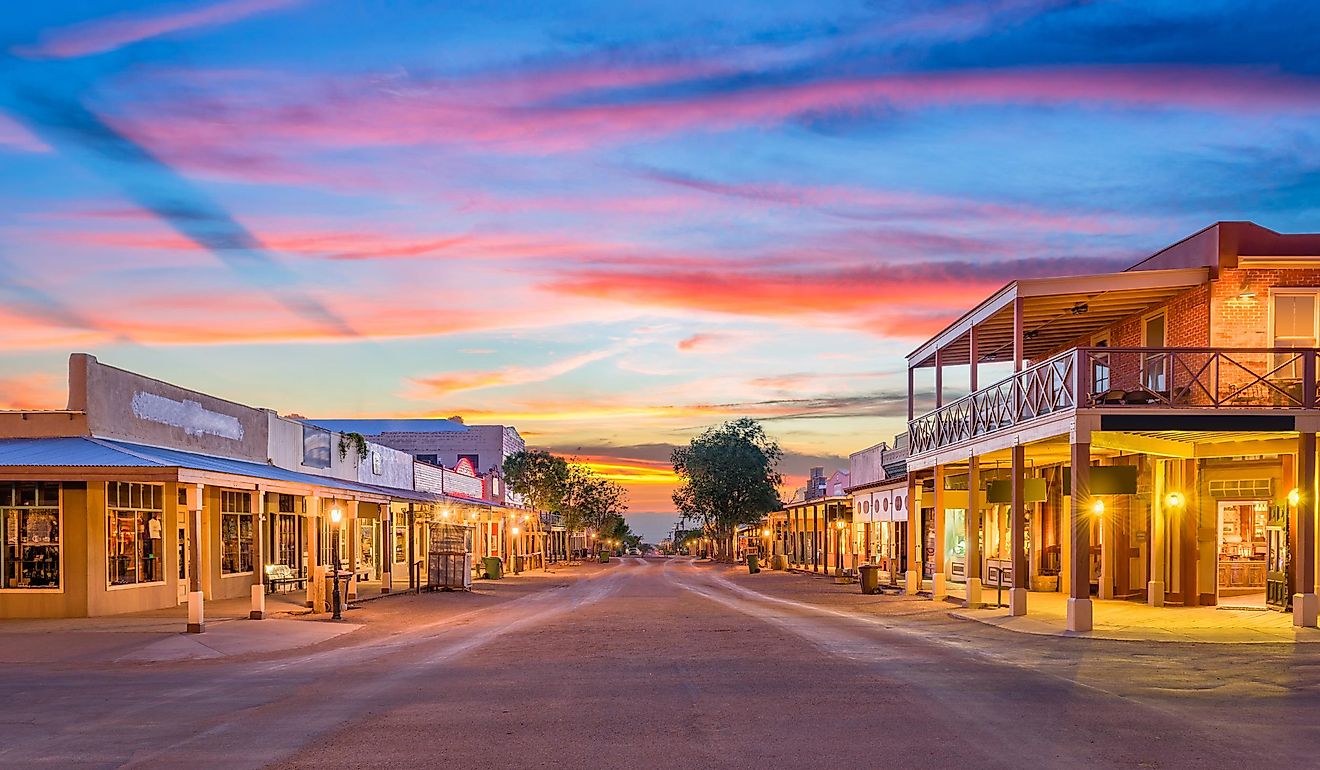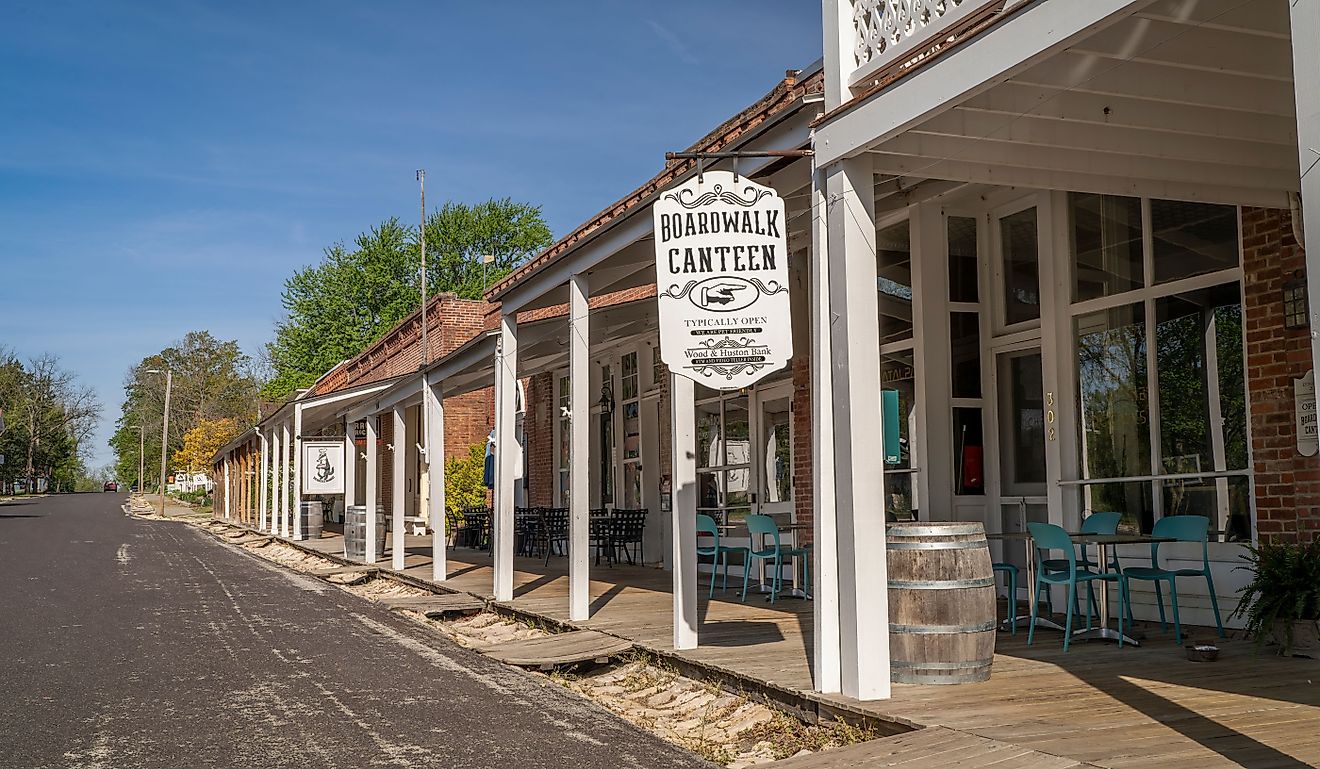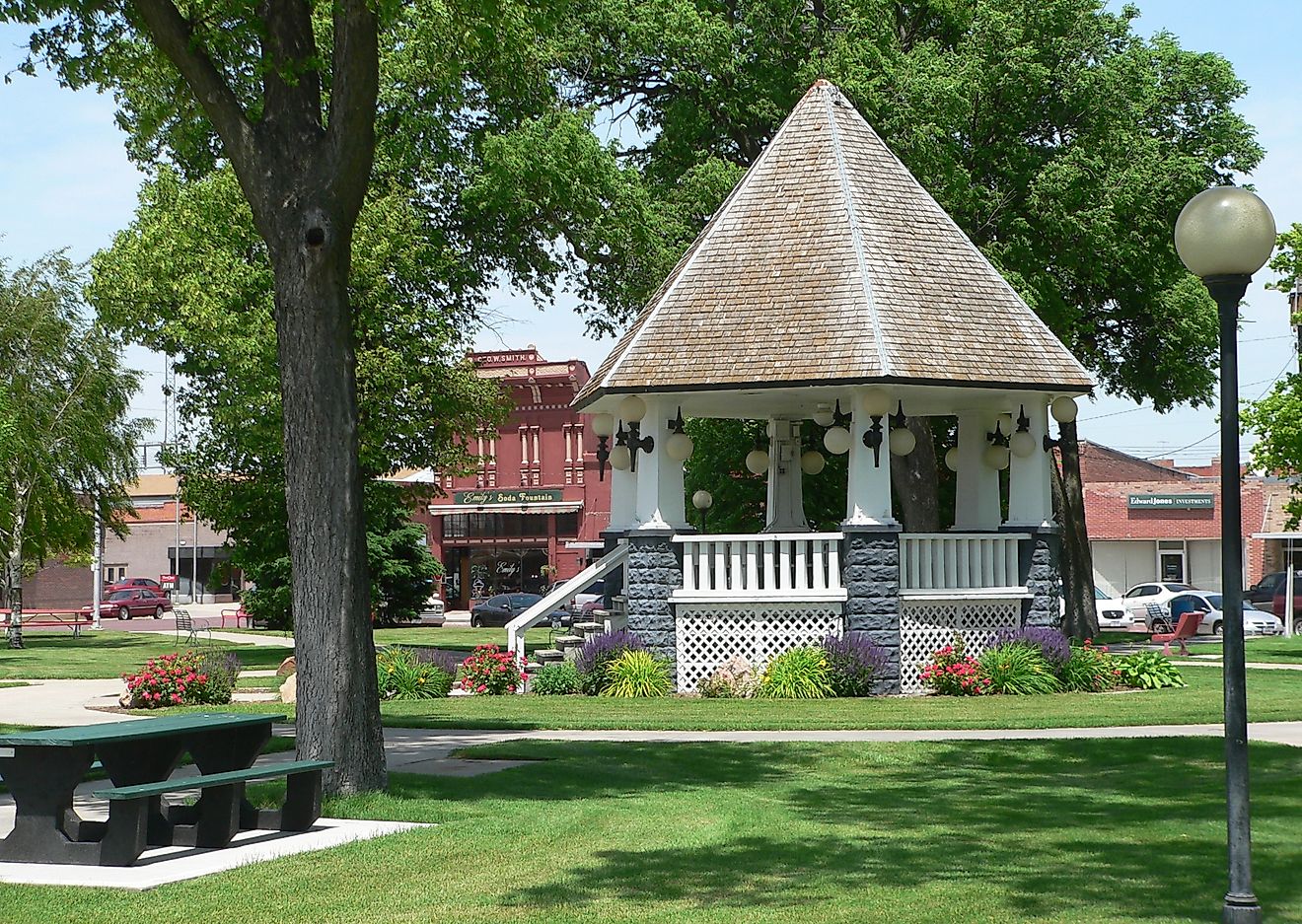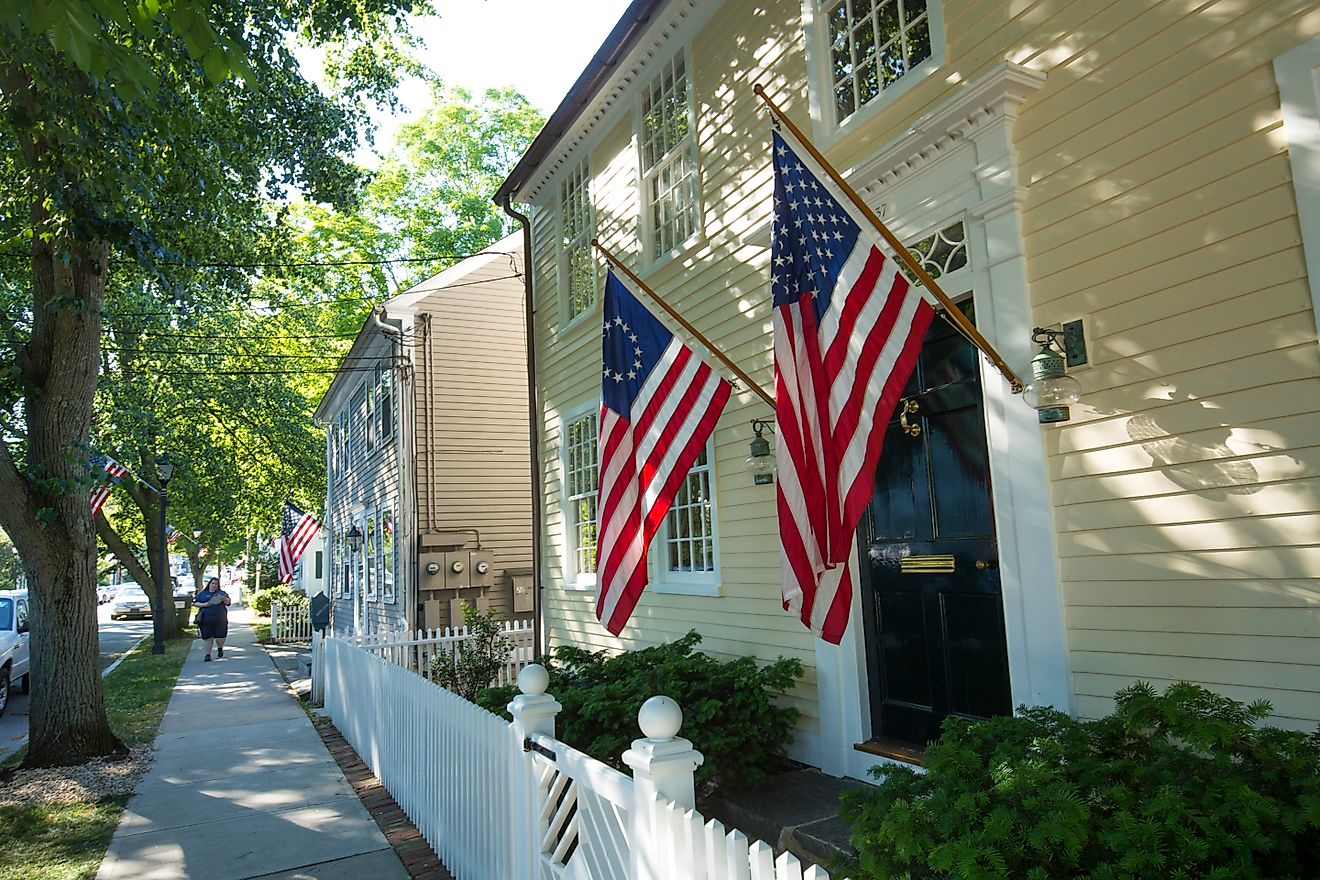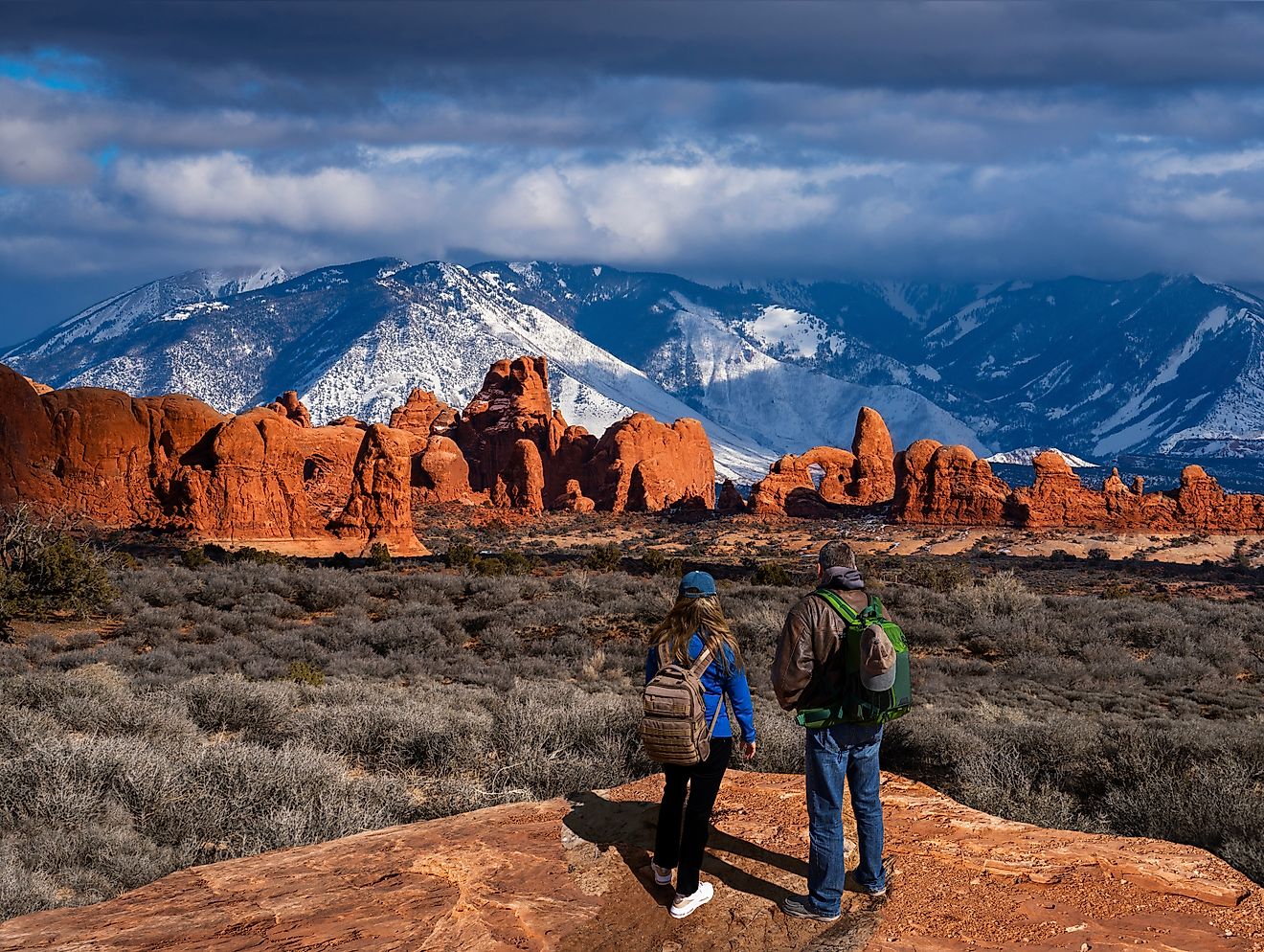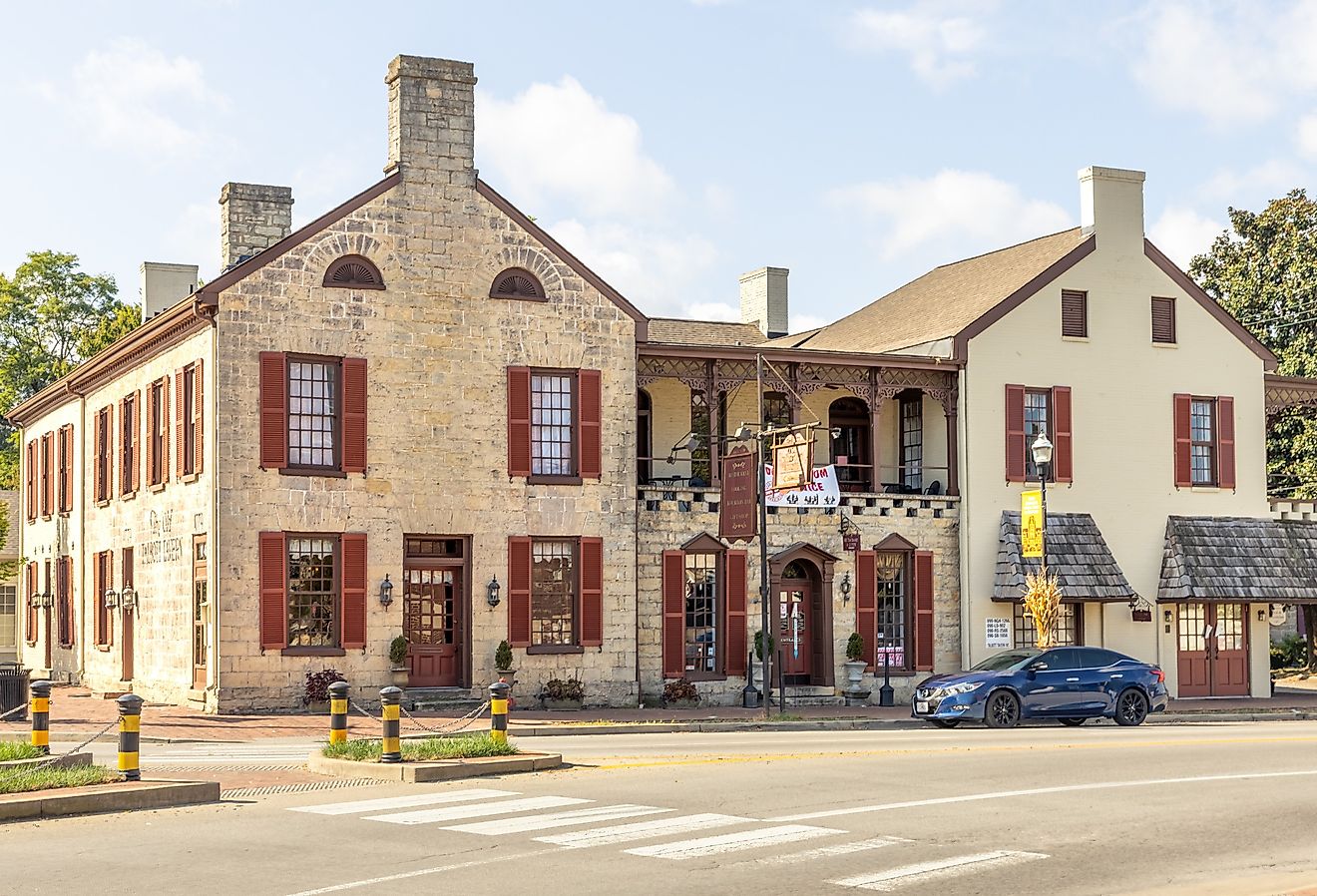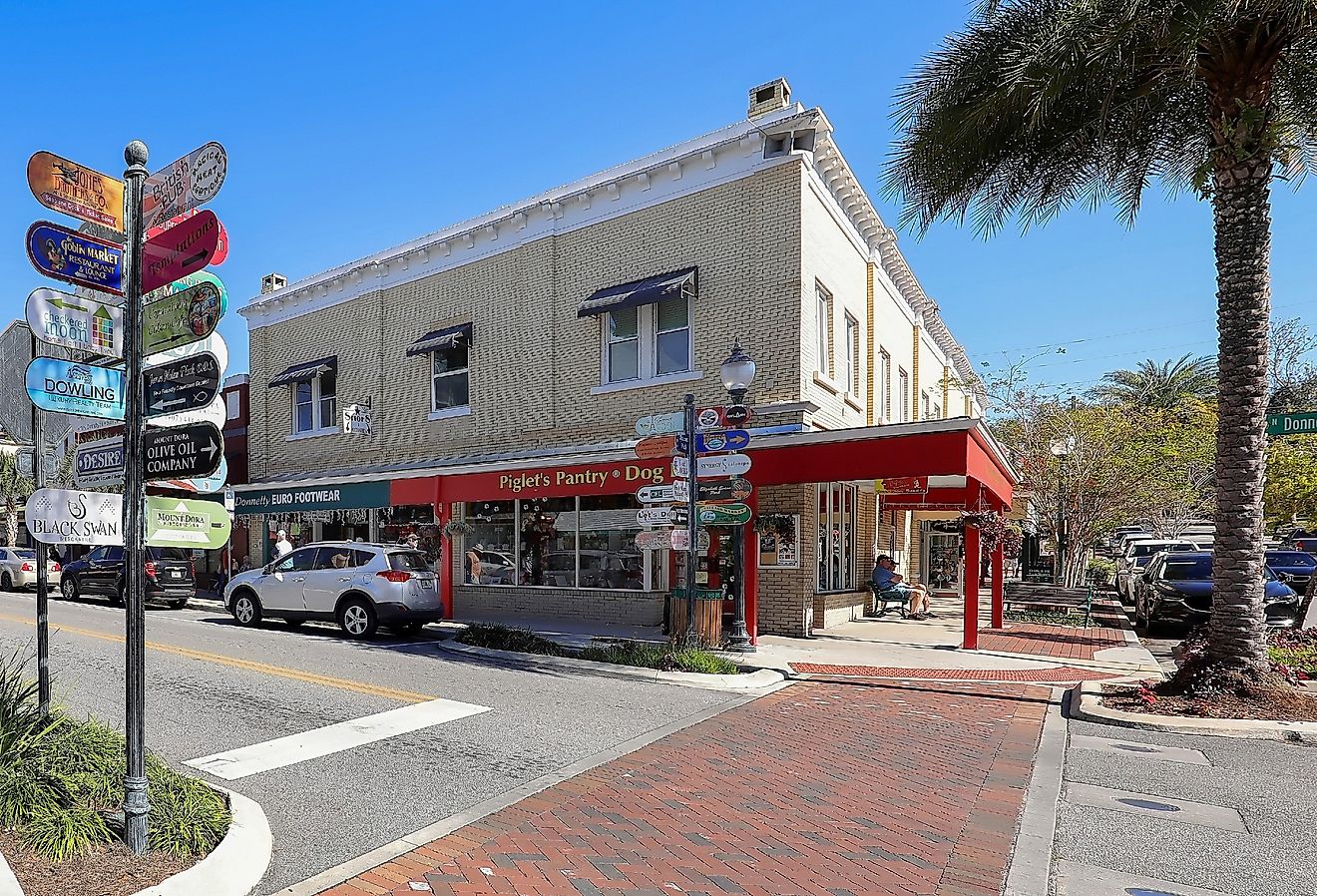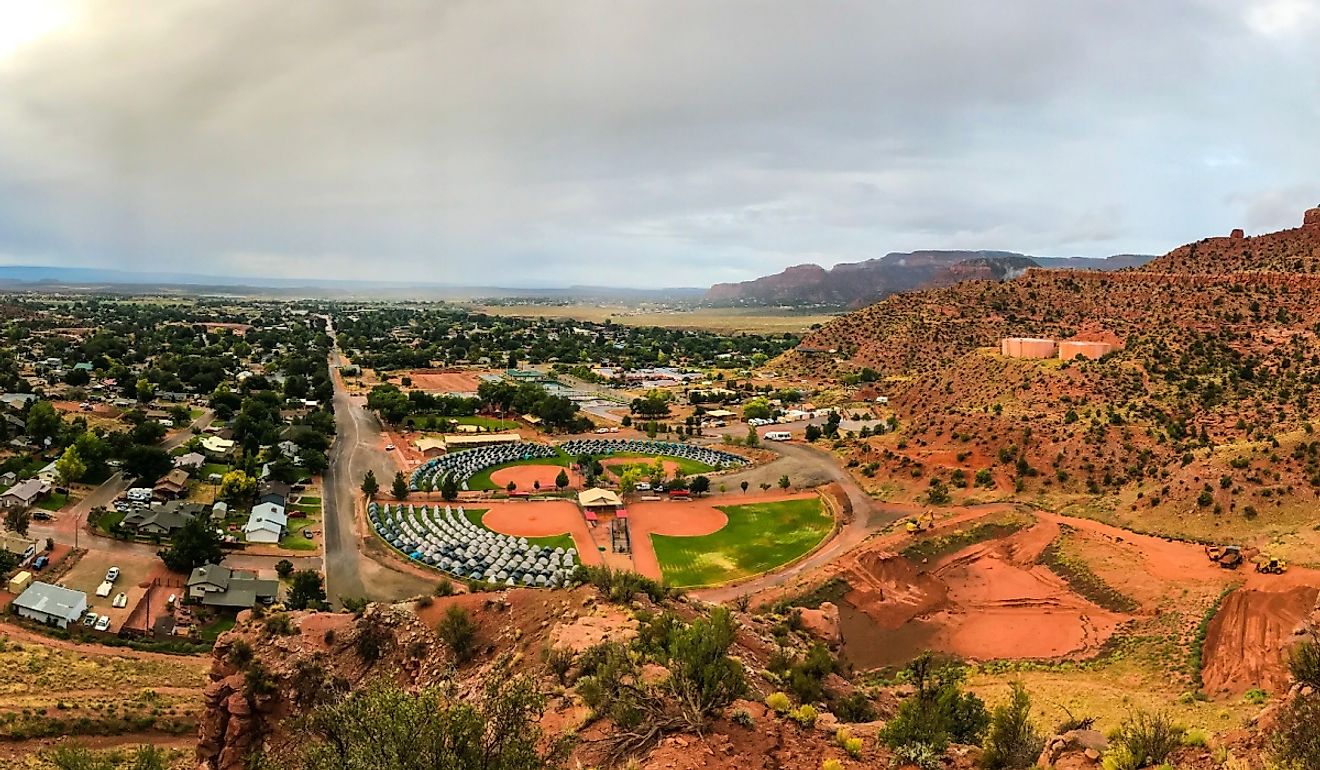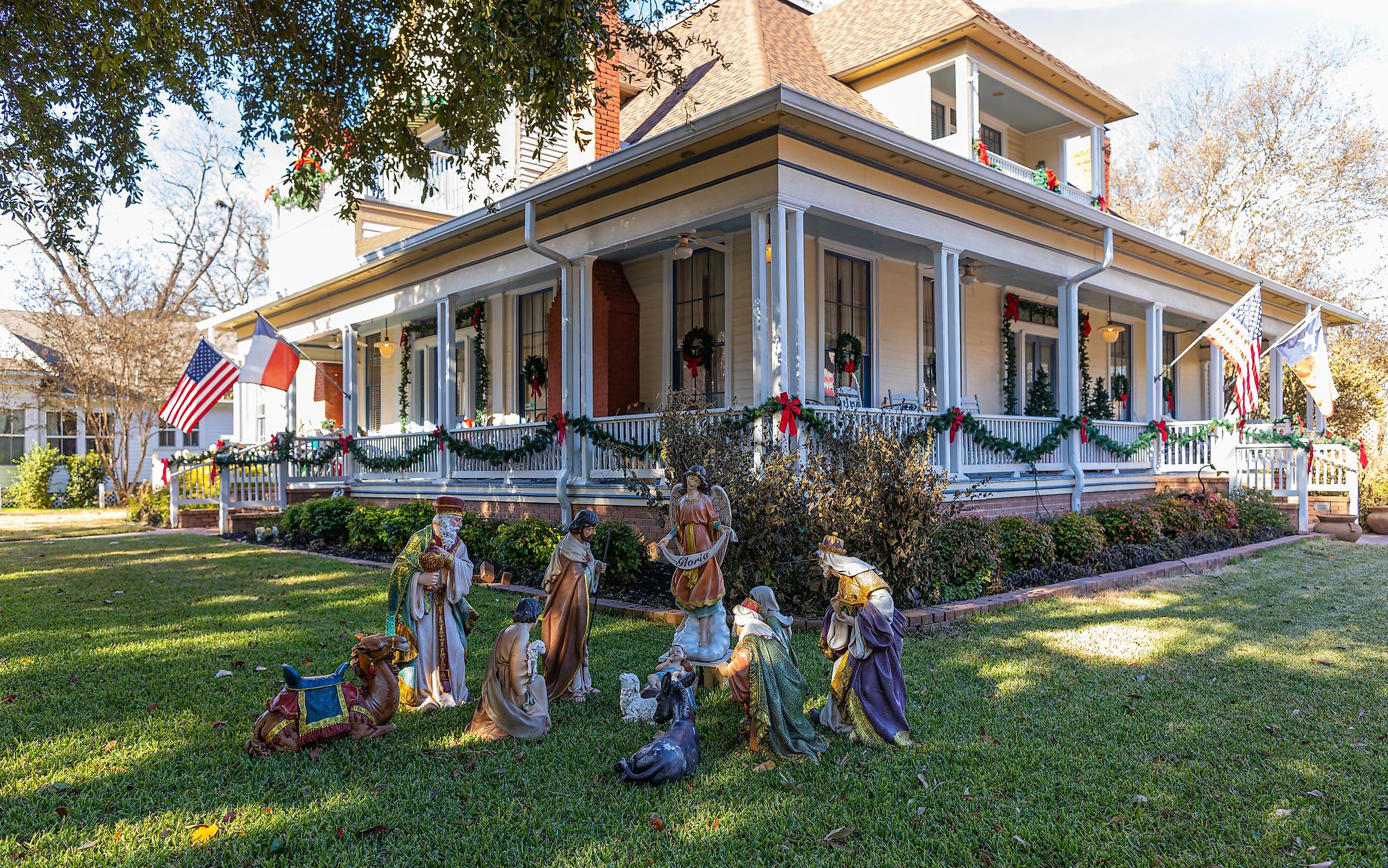
9 Top-Rated Small Towns In Texas
Texas is both the second biggest state and the second most populated state. With its size, it has everything from the warm shores of the Gulf of Mexico to the bustling big city life in Dallas. With its people, it has everything from Mexican, Native American, and Western stories and influences, spanning centuries.
In the vast expanse of the state, echoes of its cowboy heritage remain strong. Texas stands as the lifeblood of the oil industry and has that indomitable independent spirit, represented so well by the iconic Lone Star flag. Inside of this dynamic backdrop, these 11 towns are some of the best places to experience the heart and soul of Texas.
Marfa
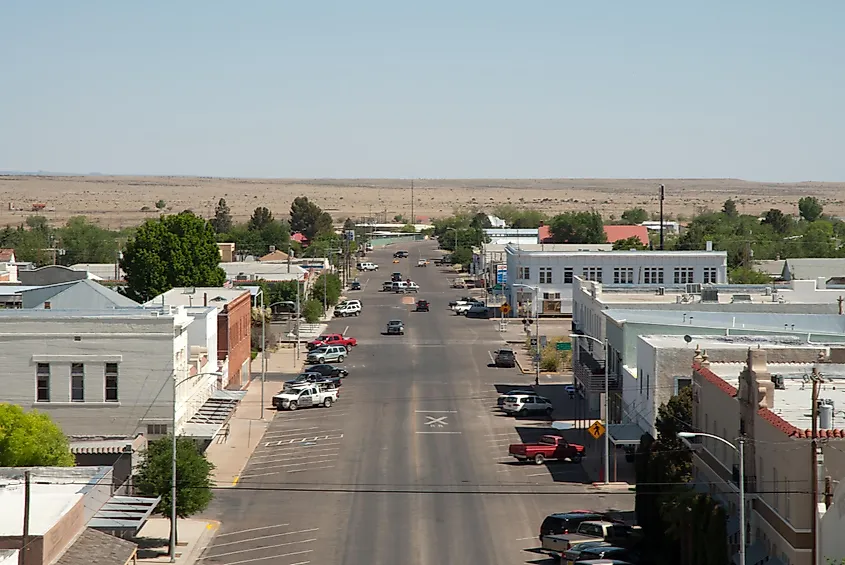
Around Marfa, golden grass spreads over the Chihuahuan Desert, with the Davis Mountains rising in the distance to the north.
As you get to town, you will find something very unique. Marfa has become an art icon, full of minimalist art pieces works that litter the town.
Highland Avenue is one of the major streets in town and is lined with iconic and historic buildings, lending to the town's distinguished feel.
Inside Marfa, the Chinati Foundation is a cultural institution with large-scale installations by artists like Donald Judd and Dan Flavin. Judd was also the founder, as he wanted to create a space for permanent art installations.
Right in the middle of the town is the imposing Presidio County Courthouse. Built in 1886, the courthouse’s prominent dome really stands out, topped with a Goddess of Justice statue.
If you look closely, she is missing her trademark scale and sword, allegedly shot off decades ago by an unhappy resident.
Bandera

Bandera is known as the 'Cowboy Capital of the World,' and after seeing the hitching posts dotted all over town, you will understand why.
The town embraces the Western lifestyle and is full of Western-themed shops, cowboy gear stores, and restaurants that contribute to the cowboy atmosphere.
Since rodeos are a quintessential part of cowboy culture, naturally Bandera hosts numerous rodeo events and competitions throughout the year, like the Summer Series Rodeo, which runs from June to August.
The town also has historic sites detailing its Western heritage, including the Frontier Times Museum, which teaches visitors about Bandera County.
If you feel like experiencing some of the cowboy lifestyle, there are several dude ranches where visitors can stop in and get a small taste. Depending on which farm you go to, you can try horseback riding, cattle drives, or just admire the professionals handling the animals.
Fredericksburg
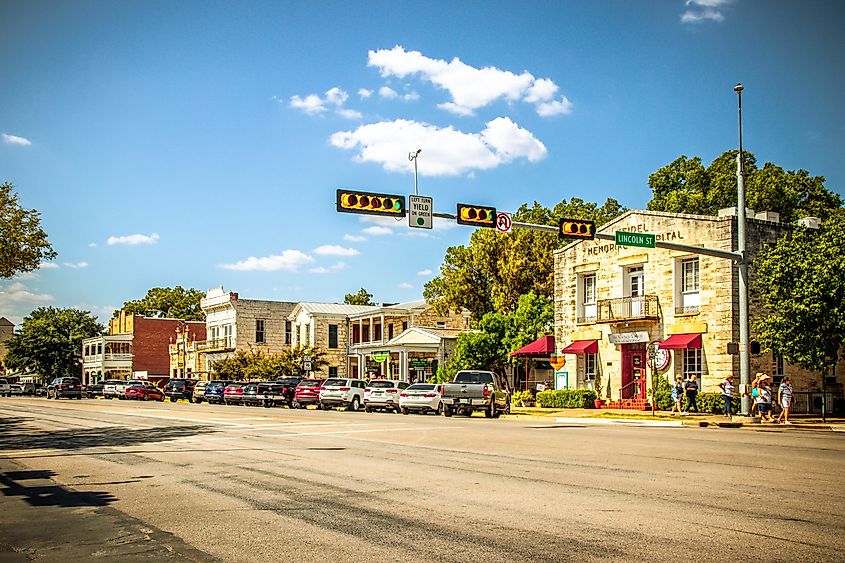
When you come to visit Fredericksburg, you can sense the distinctively German feel in town. In the 19th century, some of the original settlers came from Germany and named the town after Prince Frederick.
Naturally, there are some German festivals to enjoy. There is an annual Oktoberfest and a German-themed Christmas festival, called Weihnachten, highlighted by Fredericksburg’s Christmas Nights of Lights.
The National Museum of the Pacific War is a must-see. It is an institution committed to preserving and interpreting the history of the Pacific Theater during World War II. The museum is dedicated to Fleet Admiral Chester W. Nimitz, a former resident of Fredericksburg.
Make sure to visit in spring when the country around Fredericksburg bursts with color from blooming wildflowers, including the iconic Texas bluebonnets.
For a great time outdoors, Enchanted Rock State Natural Area lies about 20 minutes north of town. The massive pink granite dome is a popular spot for hiking and allows for gorgeous views of the surrounding Hill Country.
Salado
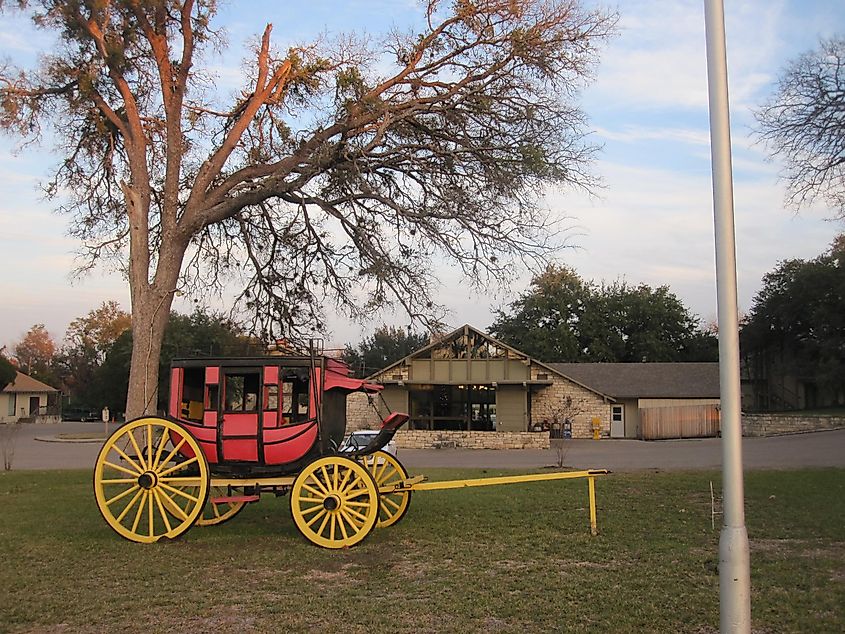
Less than an hour north of Austin, Salado sits peacefully amongst the gently rolling hills of Texas Hill County.
The town once served as a crossing point on the historic Chisholm Trail, connecting Texas ranches to railroads, placing Salado directly in the middle of the Old West.
In town, the legendary Stagecoach Inn still stands. Built in 1861, this hotel has seen the likes of Sam Houston and the outlaw Jesse James. Now, it comes with a nice espresso and HBO on the TV.
Make sure to explore the Royal Street District and have a beer at the Barrow Brewing Company. After, you can stroll down and shop at the boutiques or stop off at the Salado Museum & College Park to learn some local history.
The town has lots of diverse cultural festivals, like the Scottish Gathering and Highland Games, held every November. Salado also hosts a Chocolate Festival, attracting food connoisseurs with a sweet tooth, featuring artisanal chocolates and chocolate-themed events.
Port Aransas
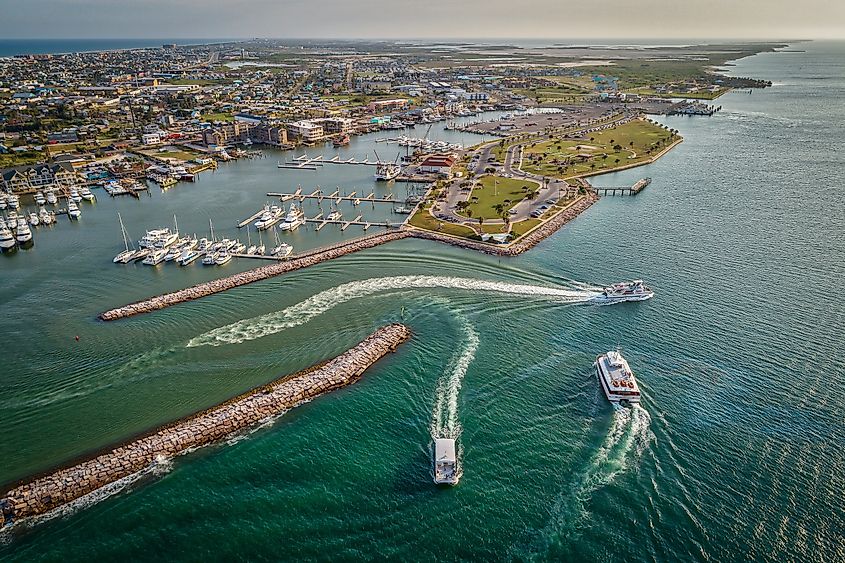
Near the town of Port Aransas, sandy beaches stretch out alongside the coast of the Gulf of Mexico.
The town offers 18 miles of spacious beaches, providing opportunities for activities like surfing and kayaking in the clear waters.
Hopefully, you are comfortable with company when you are in the water. The ocean surrounding Port Aransas is full of wildlife, and you might see some sea turtles or dolphins swim by.
Some people like fishing. Here in Port Aransas, they love it. The town is known as the 'Fishing Capital of Texas,' and there's even a fishing tournament held almost every weekend.
The Port Aransas Nature Preserve lies to the west of is comprised of four distinct protected sites. The sites are an effort to protect the hundreds of endangered and sensitive species that call the area home.
If seeing an alligator or two does not tickle your fancy, visitors can learn more about the area's anthropological history at the Port Aransas Museum. This landmark showcases the region’s maritime history, and cultural heritage of the past and present of Port Aransas.
Wimberley

The quiet town of Wimberley might have less than 3000 residents, but it is jam-packed with things to see and do.
On a hot summer day, you will find dozens of people tubing peacefully on the Blanco River, which carves its way through town.
The heart of downtown is Wimberley Square, a bustling hub with lots of locally owned stores and restaurants. Surrounding the square, limestone facades lend the town a vintage and timeless feel.
Inside town, the Blue Hole Regional Park has a popular natural swimming hole fed by springs, with waterways lined by Cypress Trees.
Cypress Creek feeds into a local icon, Jacob's Well, where cold waters draw both swimmers and divers. On a clear sunny day, the deep pool casts a colorful collection of blues and greens.
For the more daring, the well has an expansive cave system and is considered one of the longest underwater caves in the state.
Grapevine

Located between Fort Worth and Dallas, Grapevine was settled in 1844 and named after the wild mustang grapes that grew in the region.
One of the first things that will catch your eye is the 19th and early 20th-century buildings lining Main Street. One of the most notable is the Grapevine Glockenspiel Clock Tower, towering 127 feet over Main Street
For a wistful trip, the Grapevine Vintage Railroad takes people on beautifully restored locomotives, from Main Street all the way to Fort Worth.
Right in town, the Nash Farm is a historic farmstead providing a glimpse into the agricultural history of the region.The site has interpretive programs and fun events. ‘First Fridays’ is held every month, teaching heritage skills using different themes that relate to everyday modern life.
The town also is known as the 'Christmas Capital of Texas,' and every year the city turns into a magical winter setting brimming with holiday joy, colorful lights, and festive fun.
Jefferson

Located on the Big Cypress Bayou, Jefferson has a history dating back to the early 19th century and played a crucial role as an important riverport.
Nowadays, Victorian-style homes and assorted buildings from the 19th and 20th centuries line the downtown area, reflecting years of progress.
The town is home to the Jefferson Historical Museum, housed in the Old Federal Building, and constructed in 1888. It has exhibits highlighting different aspects of Jefferson's past, including its role during the Civil War era.
Jefferson hosts the privately owned Jay Gould Railroad Car, offering a glimpse into the opulent travel style of the late 19th century.
Any visitors coming to Jefferson need to make time for the natural beauty of the Big Cypress Bayou, with cypress trees draped in Spanish moss, creating a beautiful environment to experience.
A great way to see this southern treat is by taking a peaceful steamboat tour on the water for a true bayou memory.
Port Isabel
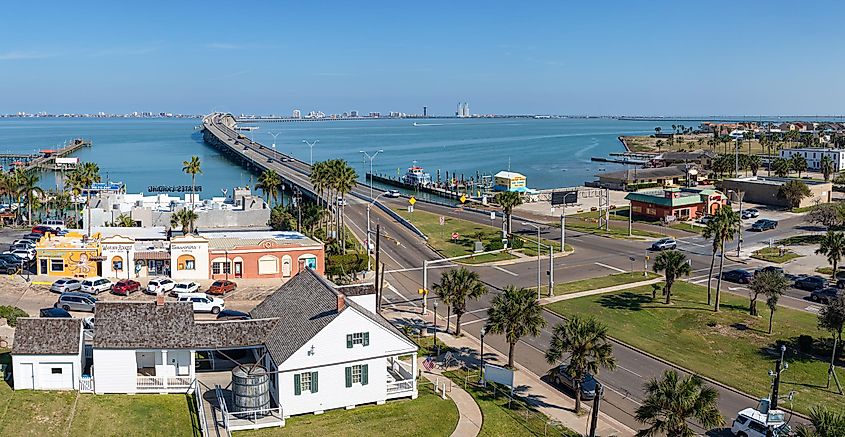
Upon reaching Port Isabel, you will likely be struck by the conspicuous white presence of the 19th century Port Isabel Lighthouse, overseeing the ocean.
Positioned on the western side of the Laguna Madre, a lagoon extending along the Gulf of Mexico, the town offers a view of this landscape.
While strolling through the town, the Port Isabel Historical Museum, established in 1899, will also likely catch your eye.
The exterior boasts a mural covered with various sea creatures, painted by a local fisherman in 1906.
A brief drive from Port Isabel takes you to South Padre Island, a barrier island featuring fantastic beaches within parks like Isla Blanca Park and Andy Bowie Park.
Also on the island is Sea Turtles Inc., which engages in turtle rescue, educational programs, and the coordination of baby turtle releases.
In Conclusion
Since achieving statehood in 1845, Texas has been a magnet for visitors wanting to explore the unique spirit of the Lone Star state.
From artistic towns to cowboy traditions, dramatic physical landscapes, and coastal wonders, each town teaches you something completely different about what it means to be a Texan.
So, throw on your cowboy hat, kick back in your boots, and get ready to experience the charm and warmth of Texas hospitality.
